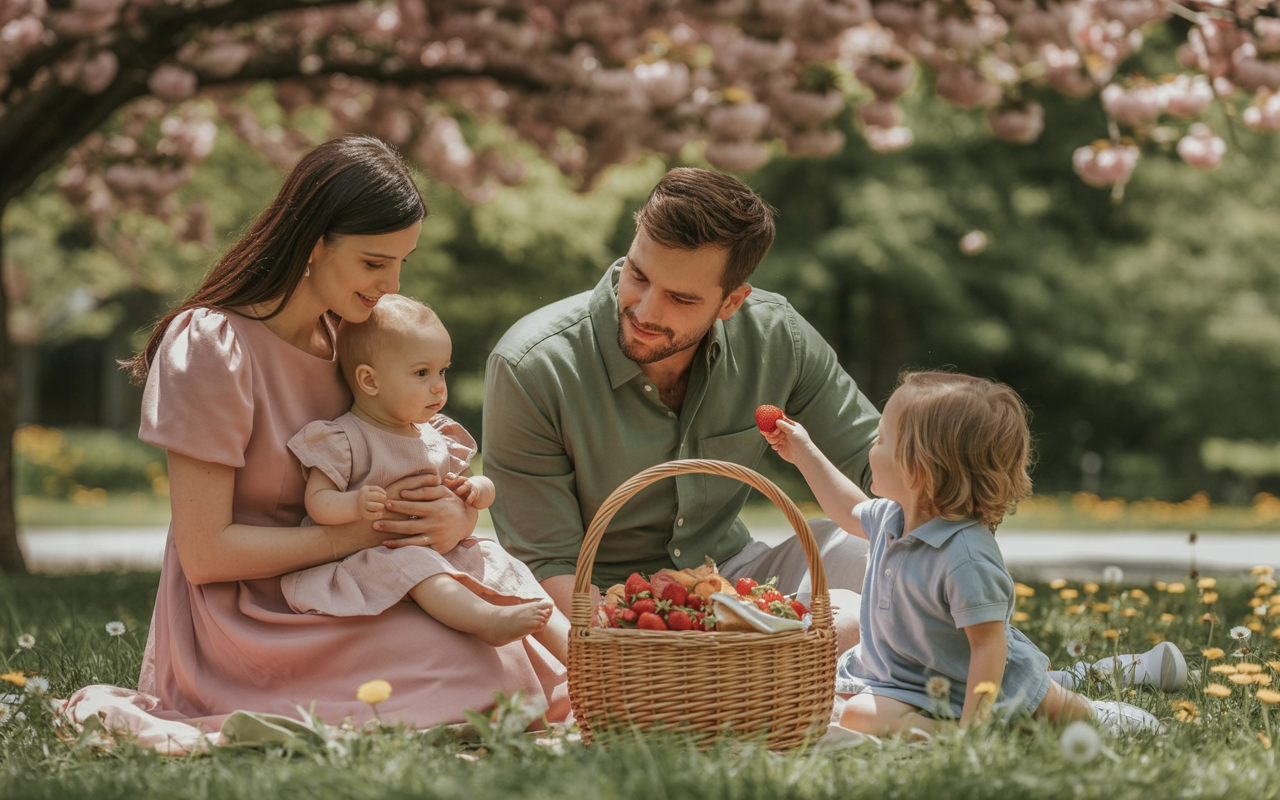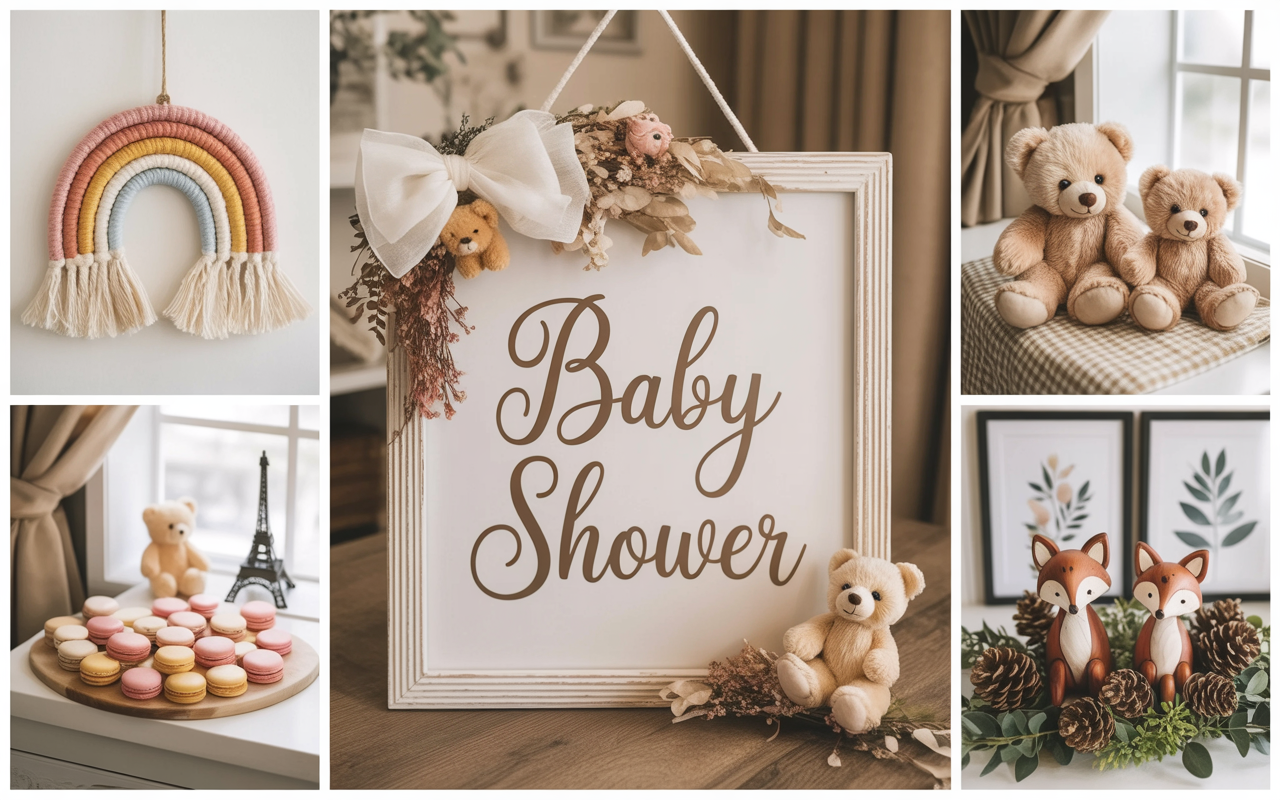Discover gentle parenting tips, smart strategies, and mindful routines to handle daily challenges with ease—perfect for moms raising toddlers to teens. Learn how positive parenting solutions can transform your family dynamics and help you build stronger connections with your children.
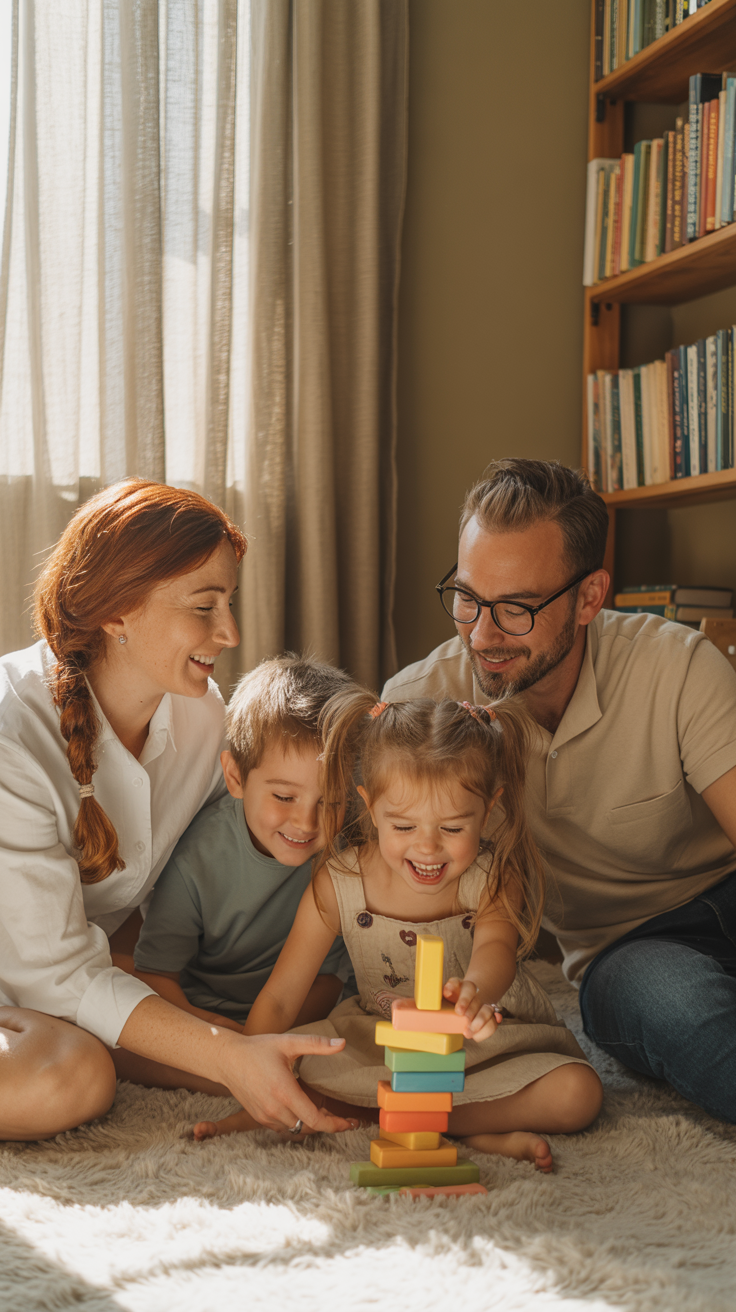
Happy family implementing positive parenting solutions at home
Understanding Positive Parenting: A Foundation for Family Harmony
Parenting isn’t about being perfect. It’s about connection, calm, and creative solutions. Whether you’re a new parent or raising teenagers, positive parenting solutions can help you thrive—not just survive—through the challenges of raising children in today’s world.
At its core, positive parenting is an approach that focuses on building strong relationships with your children through mutual respect, effective communication, and consistent boundaries. Unlike authoritarian parenting styles that rely heavily on punishment, positive parenting emphasizes understanding the reasons behind behaviors and teaching children valuable life skills.
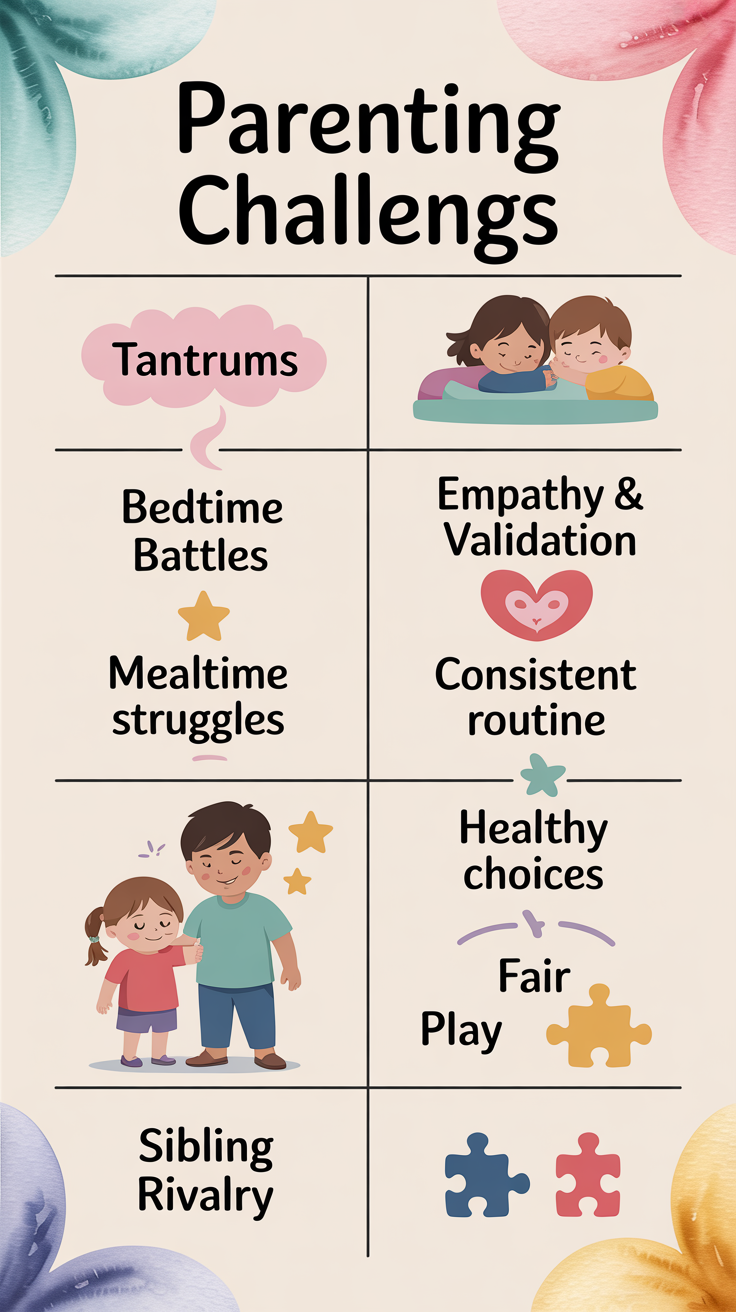
Mother connecting with child using positive parenting solutions
Core Values of Positive Parenting
Respect
Treating children as individuals with their own thoughts, feelings, and perspectives is fundamental to positive parenting solutions. When we show respect to our children, they learn to respect themselves and others. This means listening actively, acknowledging their feelings, and involving them in decision-making when appropriate.
Empathy
Understanding your child’s emotions—even when they’re expressing them in challenging ways—helps build a secure attachment. Empathy doesn’t mean permissiveness; rather, it means acknowledging feelings while still maintaining appropriate boundaries. “I understand you’re frustrated, AND we still need to clean up the toys.”
Connection
Strong parent-child bonds form the foundation for cooperation and healthy development. When children feel connected to their parents, they’re more likely to cooperate and less likely to act out. Daily connection moments—even just 10-15 minutes of undivided attention—can significantly improve behavior.
Positive Communication
How we speak to our children becomes their inner voice. Positive parenting solutions emphasize clear, respectful communication that builds children up rather than tearing them down. This means focusing on what to do rather than what not to do, and using encouraging language that motivates cooperation.
Ready to Transform Your Parenting Approach?
Take the first step toward more peaceful parenting with our free mini-course on positive parenting essentials.Get Free Mini-Course
Common Parenting Challenges & Positive Solutions
Every parent faces challenges, but with positive parenting solutions, you can navigate them with confidence and grace. Here are some common parenting struggles and effective strategies to address them:
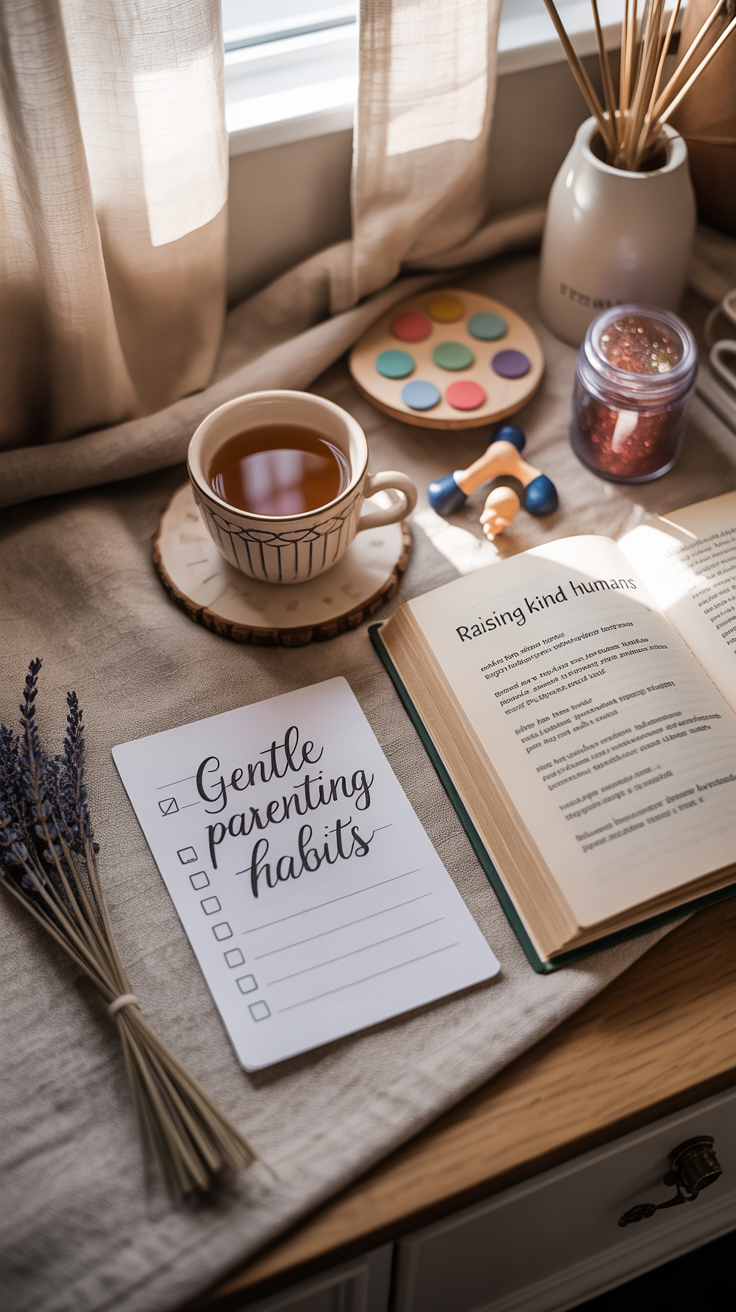
Parent calmly handling a child’s tantrum using positive parenting solutions
| Challenge | Positive Parenting Solution | Why It Works |
| Tantrums & Meltdowns | Stay calm, validate feelings, offer comfort: “I see you’re really upset. I’m here when you’re ready for a hug.” | Helps children feel understood while teaching them that big emotions are manageable. Builds emotional intelligence and self-regulation skills. |
| Bedtime Resistance | Create a consistent, calming routine with clear expectations and choices within boundaries: “Would you like to wear the blue or green pajamas tonight?” | Consistency creates security, while limited choices give children a sense of control within your boundaries. |
| Sibling Conflicts | Avoid taking sides, acknowledge feelings, and guide problem-solving: “I see you both want the toy. What solutions can we think of?” | Teaches conflict resolution skills and empathy rather than relying on parental judgment or punishment. |
| Not Listening/Ignoring | Get close, make eye contact, use a calm voice, and be specific: “When I ask you to put on your shoes, I need you to stop what you’re doing and put them on right away.” | Creates connection before correction and clearly communicates expectations without yelling or threats. |
| Power Struggles | Offer appropriate choices and natural consequences: “You can choose to wear your coat, or you can choose to be cold at the park.” | Shifts from control to collaboration while still maintaining necessary boundaries. Teaches cause and effect. |
| Teen Rebellion | Listen without judgment, validate feelings, and problem-solve together: “I hear this is important to you. Let’s figure out a solution we can both feel good about.” | Maintains connection during a developmental stage when teens need autonomy while still needing guidance. |
“The way we talk to our children becomes their inner voice. Choose your words wisely, and remember that connection before correction is key to effective positive parenting.”
– Amy McCready, Positive Parenting Solutions
Daily Habits for Gentle, Positive Parenting
Implementing positive parenting solutions doesn’t require a complete lifestyle overhaul. Small, consistent changes in your daily interactions can make a significant difference in your family dynamics. Here are practical habits you can start today:
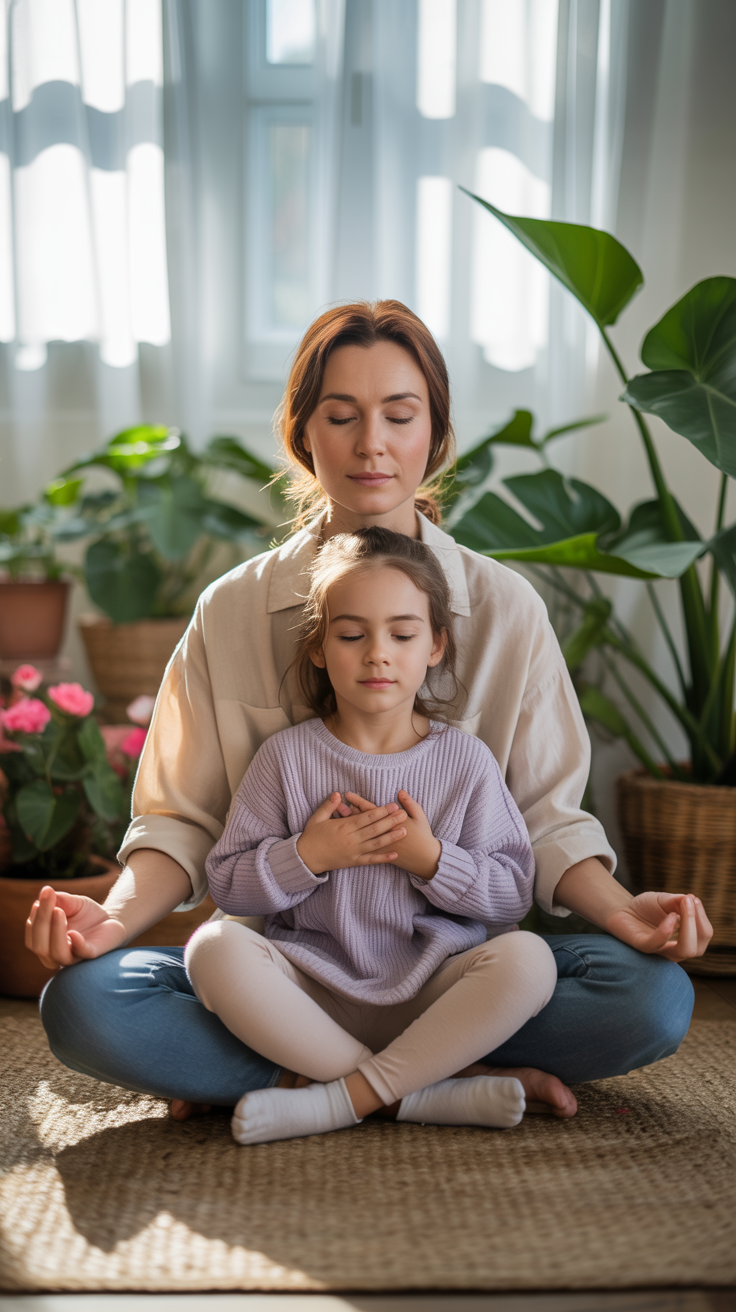
Family implementing daily positive parenting habits at dinner time
Natural Consequences vs. Punishment
One cornerstone of positive parenting solutions is the use of natural consequences rather than arbitrary punishments. Natural consequences help children understand the real impact of their choices without damaging the parent-child relationship.
Punishment Approach
Child refuses to wear a coat → Parent forces coat on or yells → Child learns obedience out of fear
Child doesn’t do homework → Parent takes away unrelated privilege → Child feels resentful and doesn’t learn responsibility
Child breaks a toy → Parent lectures and puts toy in timeout → Child feels shame but doesn’t learn to care for belongings
Natural Consequences Approach
Child refuses to wear a coat → Child feels cold outside → Child learns weather-appropriate clothing is important
Child doesn’t do homework → Child experiences teacher’s response → Child learns academic responsibility
Child breaks a toy → Toy remains broken or child helps repair it → Child learns to value and care for possessions
Modeling the Behavior You Want to See
Children learn more from what we do than what we say. Positive parenting solutions emphasize the importance of modeling the behaviors and emotional regulation skills you want your children to develop. Practice calm responses to frustration: “I’m feeling frustrated right now. I’m going to take a deep breath before I respond. “Demonstrate respectful communication with your partner and others Apologize when you make mistakes: “I’m sorry I raised my voice. I was feeling overwhelmed, but that’s not how I want to communicate. “Show self-care and healthy emotional regulation Model the problem-solving process by thinking aloud
Empathy-Based Discipline
Discipline means “to teach,” not “to punish.” Empathy-based discipline focuses on teaching skills and values while maintaining a strong connection with your child.
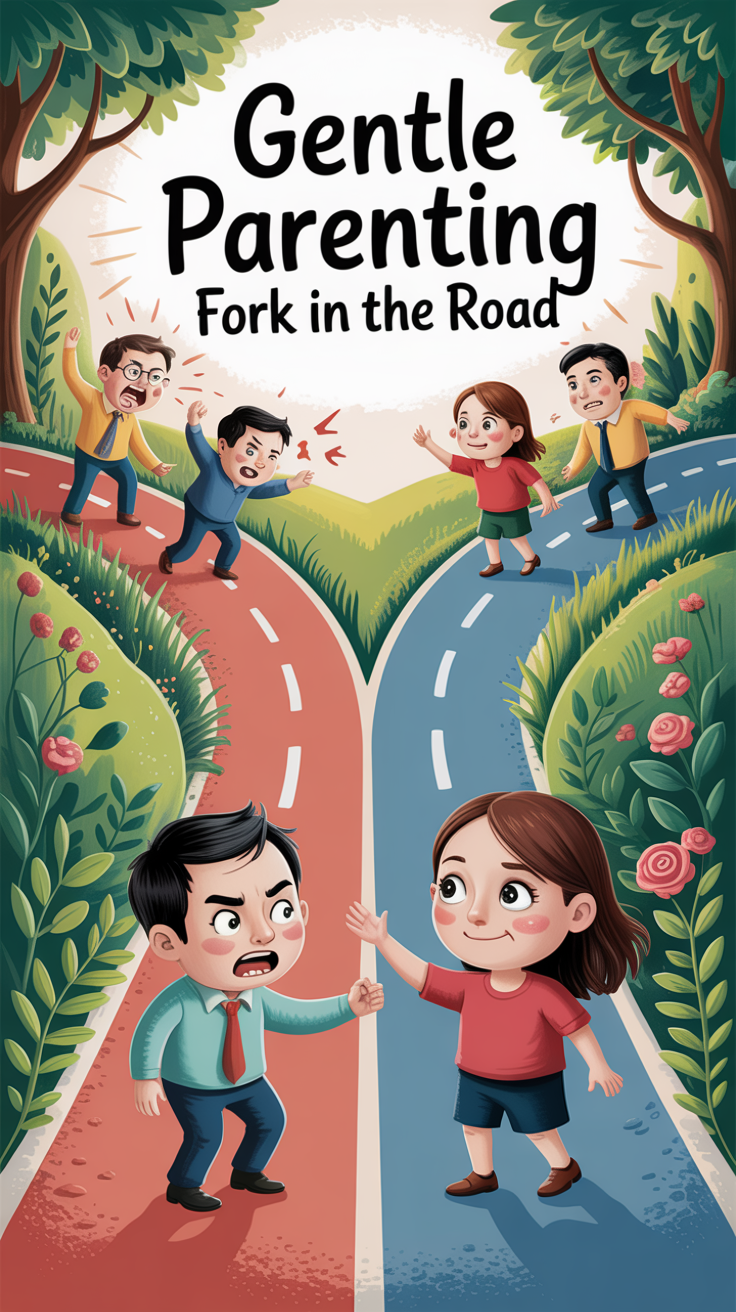
Parent using empathy-based discipline with child
How do I implement empathy-based discipline?
Start by connecting with your child’s feelings: “I see you’re really angry right now.” Then set a clear boundary: “It’s not okay to hit when you’re angry.” Finally, teach an alternative: “When you feel angry, you can stomp your feet, use your words, or take a break in the calm-down corner.”
What if my child keeps repeating the same behavior?
Repeated behaviors often indicate a skill deficit, not defiance. Ask yourself: “What skill does my child need to learn?” For example, if your child interrupts constantly, they may need to learn patience or appropriate ways to enter a conversation. Focus on teaching the missing skill rather than just addressing the behavior.
How do I stay consistent with positive parenting?
Consistency is challenging but crucial. Create simple family rules and post them visibly. Develop routines for challenging times of day. Practice self-care so you have the emotional resources to parent positively. And remember that progress, not perfection, is the goal.
Need More Support with Positive Discipline?
Our free positive parenting webinar covers practical strategies for effective, empathy-based discipline that works.Join Free Webinar
Smart Positive Parenting Solutions for Different Ages
While the core principles of positive parenting remain consistent, the specific strategies you’ll use will evolve as your child grows. Here’s how to adapt positive parenting solutions for different developmental stages:
Parent reading with toddler using positive parenting techniques
Toddlers (1-3 years): Building Foundation
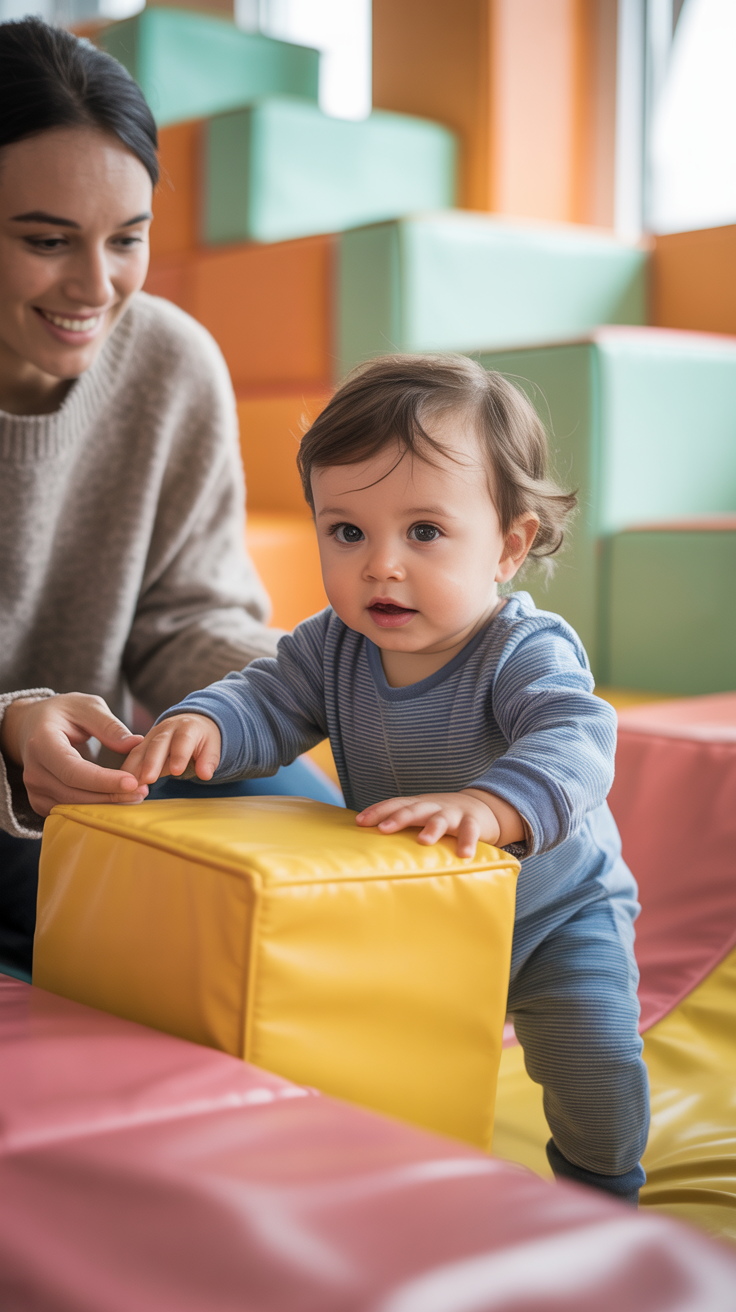
Toddlers are developing independence while still needing security. They’re exploring boundaries and experiencing big emotions with limited language skills. Redirection: Instead of saying “no” constantly, redirect to acceptable activities: “Blocks aren’t for throwing. Let’s build a tower instead. “Simple Choices: Offer limited options to give a sense of control: “Do you want the red cup or the blue cup?” Consistent Routines: Create predictable patterns for meals, sleep, and transitions to provide security Emotion Naming: Help identify feelings: “You’re feeling frustrated because the block tower fell.” Physical Outlets: Provide safe ways to release energy and emotions through movement
Toddler Tantrum Tip: When your toddler is having a meltdown, stay nearby and offer comfort without trying to reason or fix the situation immediately. Say, “I see you’re upset. I’m here when you’re ready for a hug.” This validates their feelings while teaching that emotions are manageable.
Preschoolers (3-5 years): Developing Skills
Preschoolers are developing social skills, independence, and emotional regulation. They’re curious, imaginative, and beginning to understand consequences.
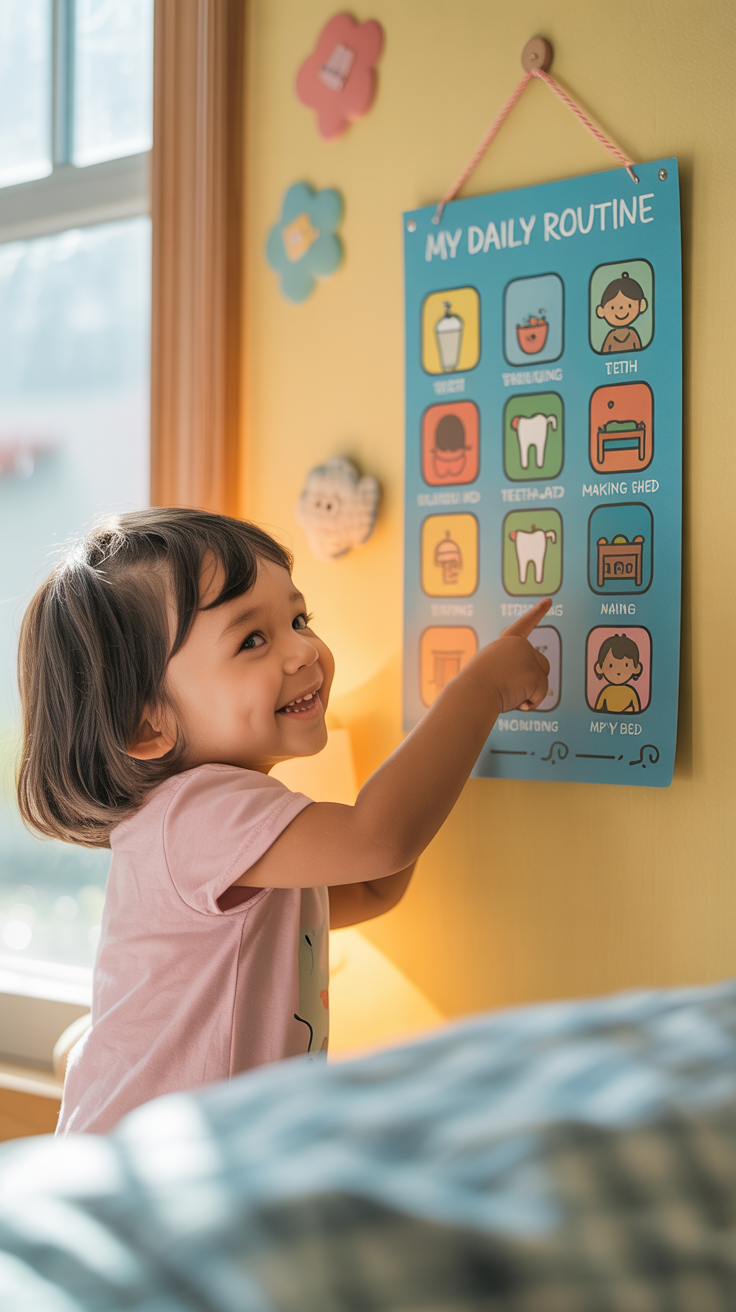
Preschooler learning emotional regulation with parent support
Visual Routines: Create picture charts for morning routines, bedtime, etc. Problem-Solving: Begin involving children in finding solutions: “What could we do differently next time?” Natural Consequences: Allow safe natural consequences: “If you don’t wear mittens, your hands will be cold.” Emotion Coaching: Help identify feelings and appropriate expressions: “You can tell your friend you’re angry, but you can’t hit.” Special Time: Schedule regular one-on-one time to build connection
School-Age Children (6-12 years): Building Independence
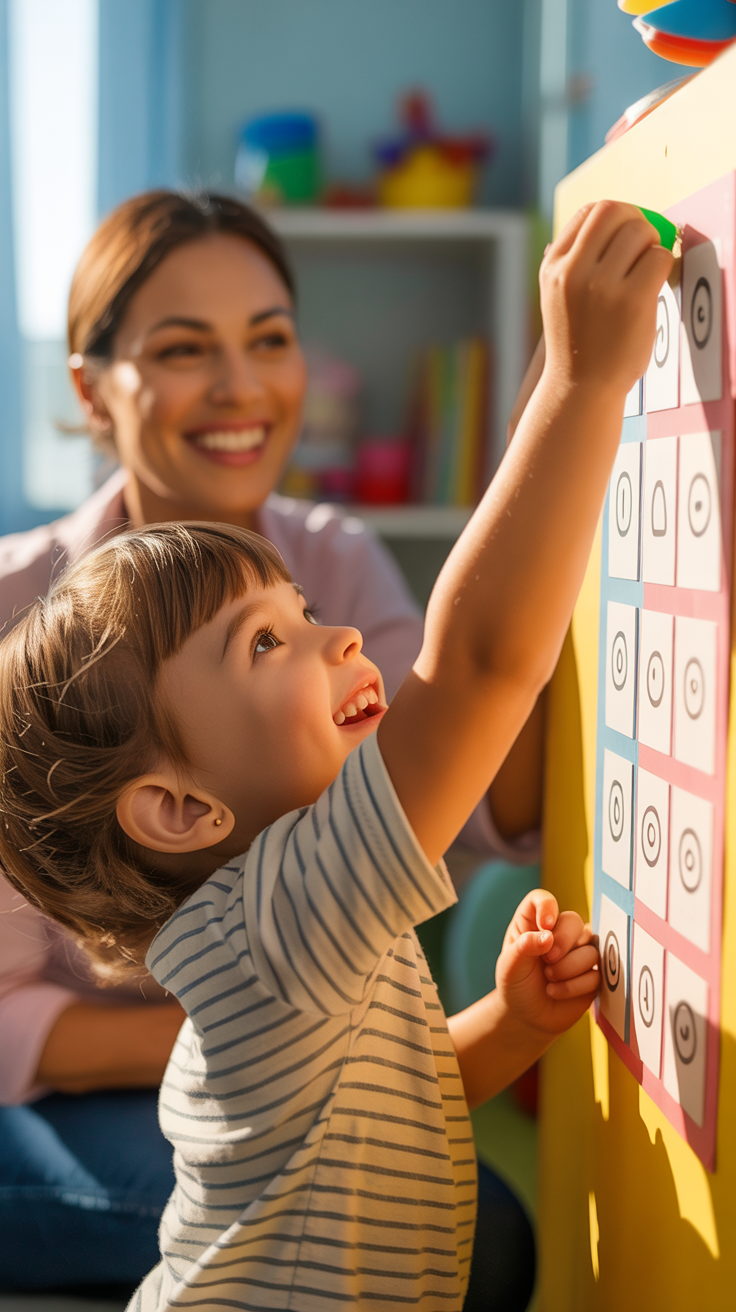
School-age children are developing academic skills, peer relationships, and a sense of competence. They need guidance while gaining independence. Family Meetings: Hold regular meetings to discuss challenges, celebrate successes, and plan family activities Logical Consequences: Connect consequences to behaviors: “Since homework wasn’t completed, screen time will be used for homework instead.” Responsibility Charts: Create visual systems for tracking chores and responsibilities Problem-Solving Process: Teach a step-by-step approach to handling conflicts and challenges Encouragement vs. Praise: Focus on effort and process rather than results: “You worked really hard on that project” instead of “You’re so smart!”
Teenagers (13-18 years): Guiding Independence
Teenagers are developing identity, independence, and decision-making skills. They need guidance while having appropriate autonomy.

Parent and teenager having a positive conversation
Active Listening: Focus on understanding before responding to build trust and communication Negotiable vs. Non-negotiable: Be clear about which rules are flexible and which are firm Natural Consequences: Allow teens to experience the results of their choices when safe to do so Collaborative Problem-Solving: Work together to find solutions that respect both parent and teen perspectives Maintain Connection: Continue one-on-one time and find ways to connect through shared interests
Positive Parenting Tip: As children grow, gradually shift from managing their behavior to coaching their decision-making. This prepares them for independence while maintaining your supportive relationship.
Mindfulness for Kids & Parents: Strengthening Positive Parenting
Mindfulness—the practice of present-moment awareness without judgment—can significantly enhance your positive parenting solutions. These practices help both parents and children manage stress, regulate emotions, and strengthen their connection.

Family practicing mindfulness together in living room
Simple Breathwork for Families
Breathing exercises are accessible mindfulness tools that can help children of all ages (and parents!) regulate their emotions and calm their nervous systems.
Balloon Breath
Have your child imagine their belly is a balloon. As they inhale, the balloon inflates (belly expands). As they exhale, the balloon deflates (belly contracts). Practice 5-10 breaths together.
Best for ages 3-8
Five-Finger Breathing
Trace your hand with the index finger of your other hand. Breathe in while tracing up a finger, breathe out while tracing down. Continue until you’ve traced your entire hand.
Best for ages 5+
4-7-8 Breathing
Inhale for a count of 4, hold for a count of 7, exhale for a count of 8. This pattern activates the parasympathetic nervous system, creating a calming effect.
Best for ages 10+ and parents
Creating a Calm-Down Corner
A designated space for processing emotions can be a powerful tool in your positive parenting solutions toolkit. A calm-down corner is not a punishment but a supportive space for emotional regulation.
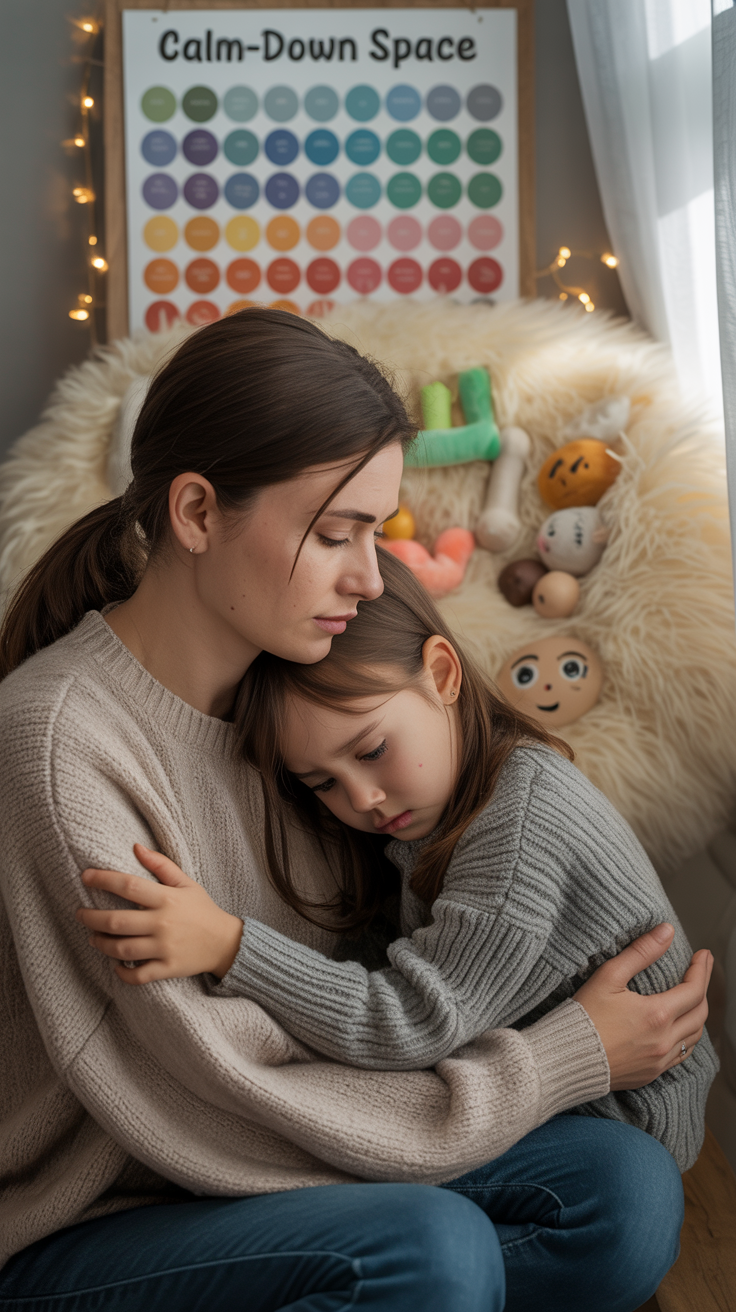
Child-friendly calm-down corner with comfort items
Comfortable Seating: Pillows, bean bags, or a small tentSensory Tools: Stress balls, fidget toys, weighted stuffed animalsEmotion Resources: Feelings charts, books about emotionsCalming Activities: Coloring books, glitter jars, breathing guidesPersonal Items: Family photos or comfort objects
Introduce the calm-down corner during a peaceful moment, not during a meltdown. Explain that it’s a special place to help manage big feelings, not a punishment. Model using it yourself when you feel frustrated or overwhelmed.
Gratitude Practices for Families
Gratitude practices help shift focus from what’s going wrong to what’s going right, fostering a positive family culture that supports your positive parenting solutions.
Gratitude Jar
Keep a jar and small slips of paper in a central location. Family members write down things they’re grateful for and add them to the jar. Read them together during family meals or as a weekly ritual.
Rose, Thorn, and Bud
During dinner or bedtime, each family member shares their “rose” (something positive), “thorn” (a challenge), and “bud” (something they’re looking forward to). This practice acknowledges both struggles and joys.
Ready to Bring More Mindfulness to Your Parenting?
Download our free Mindful Parenting Toolkit with printable resources for your family’s calm-down corner.Get Free Toolkit
Co-Parenting with Compassion: Unified Positive Parenting Solutions
Whether you’re parenting with a partner, co-parenting after separation, or parenting with the support of extended family, consistency and communication are essential for effective positive parenting solutions.
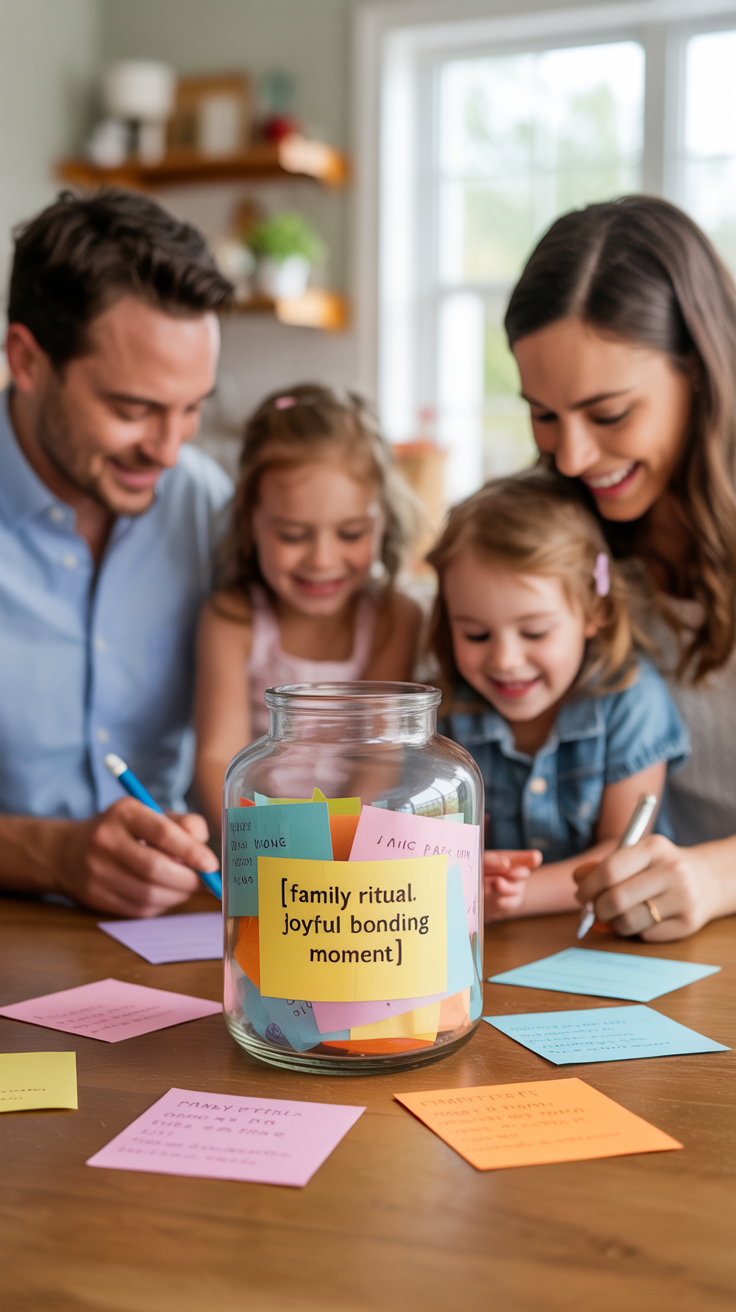
Co-parents discussing parenting strategies together
Establishing Shared Goals
Even when parenting styles differ, finding common ground on core values and long-term goals creates a foundation for consistent positive parenting. Schedule regular parenting meetings to discuss challenges and successes Create a written family mission statement that reflects shared values Focus on the “what” (core values and boundaries) rather than the “how” (specific approaches) Acknowledge each parent’s strengths and unique contributions. Present a united front on major rules and consequences
Creating Consistent Routines Across Households
Consistency provides security for children, especially when navigating multiple households or caretakers. While some differences are inevitable, maintaining core routines helps children thrive.
Essential Consistencies
- Sleep schedules and bedtime routines
- Homework expectations and support
- Screen time guidelines
- Major rules and safety boundaries
- Consequences for significant behavior issues
Acceptable Variations
- Meal options (while maintaining nutrition standards)
- Activity choices and household traditions
- Home organization systems
- Expression of affection and connection
- Individual parent-child rituals and special time
Respectful Communication Between Co-Parents
How co-parents communicate with each other directly impacts the effectiveness of positive parenting solutions. Children learn from watching these interactions.
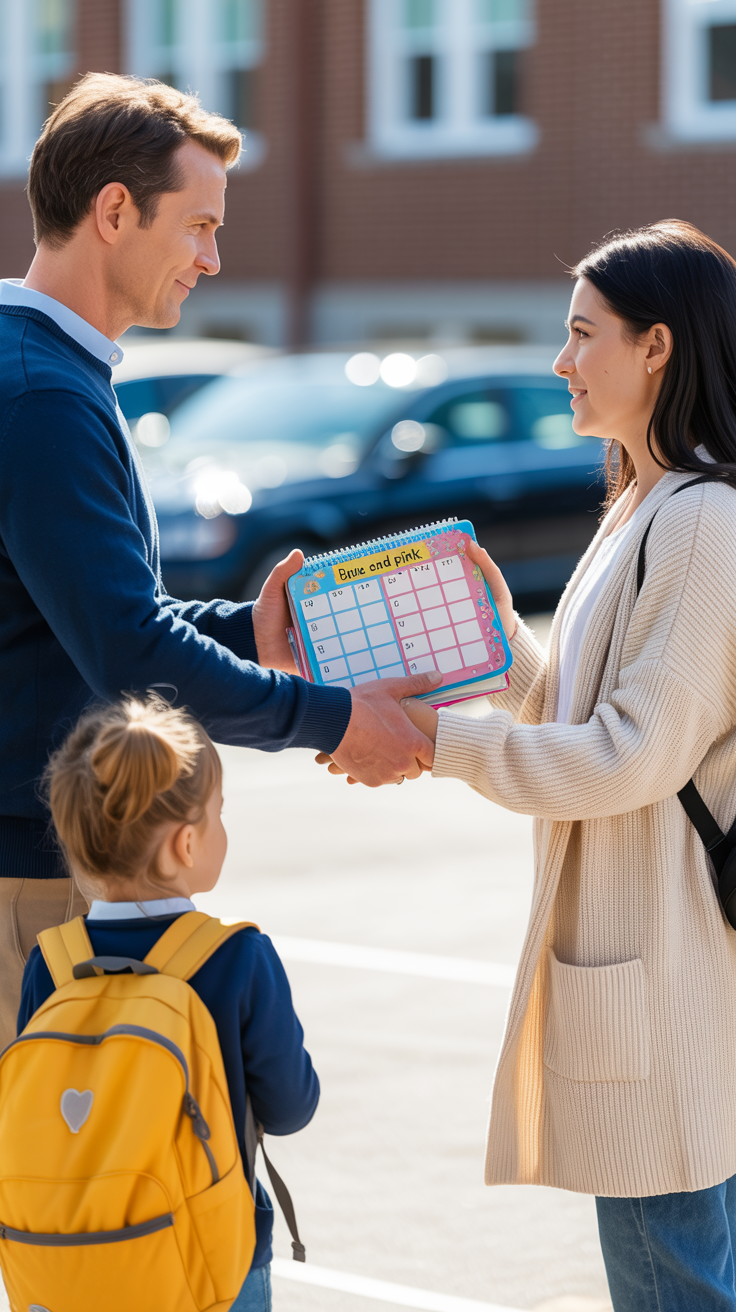
Co-parents exchanging child with positive communication
Business-Like Approach: Treat co-parenting as a professional relationship focused on the “business” of raising children Focus on Solutions: Address issues with a problem-solving mindset rather than blame Use “I” Statements: “I notice homework completion has been challenging” rather than “You never help with homework” Written Communication: Use shared calendars, apps, or notebooks to track important information Respect Boundaries: Honor each parent’s time, space, and parenting approach within agreed parameters
Important: If co-parenting involves high conflict or safety concerns, seek professional support from a family therapist or legal professional. The well-being of children always comes first.
Getting on the Same Page with Positive Parenting
When one parent is more committed to positive parenting solutions than others involved in childcare, it can create challenges. Here’s how to navigate this situation:
What if my co-parent uses different discipline approaches?
Focus on finding common ground rather than trying to convert them completely. Share articles or resources about specific issues rather than general parenting philosophy. Highlight the benefits you’ve seen from positive approaches. Remember that some consistency is better than none, and children can adapt to different approaches in different settings.
How do I handle grandparents or caregivers who don’t use positive parenting?
Clearly communicate your non-negotiables (like no physical punishment) while allowing flexibility in other areas. Provide simple scripts or alternatives they can use. Recognize that different generations have different approaches, and limited exposure to other methods won’t undo your consistent positive parenting.
What if we disagree in the moment?
Avoid contradicting each other in front of the children. If a situation arises where you strongly disagree with your co-parent’s approach, wait to discuss it privately. You can say, “Let’s talk about this later” and then address it when children aren’t present.
Essential Resources for Your Positive Parenting Journey
Implementing positive parenting solutions is an ongoing journey. These resources can provide additional support as you continue to grow and learn:
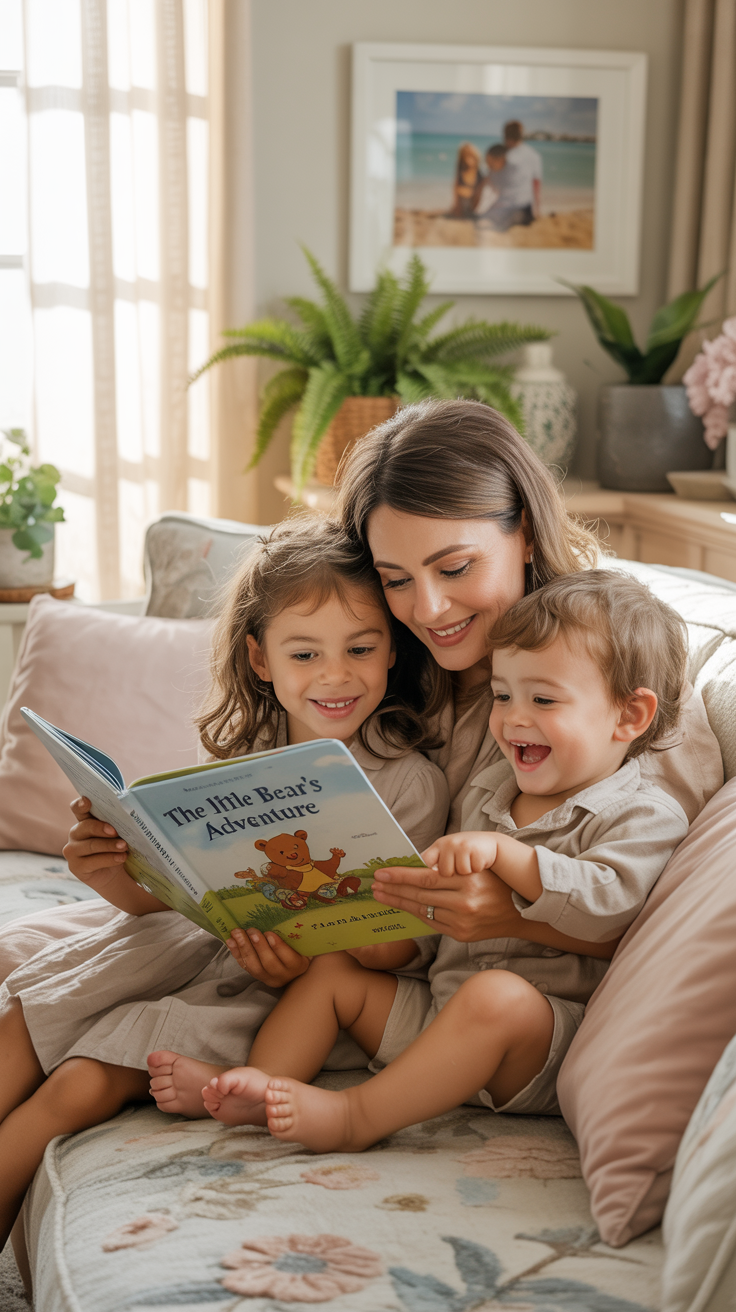
Parent reading positive parenting books and resources
Recommended Books on Positive Parenting
For Parents of Young Children
- “How to Talk So Little Kids Will Listen” by Joanna Faber & Julie King
- “No-Drama Discipline” by Daniel J. Siegel & Tina Payne Bryson
- “Peaceful Parent, Happy Kids” by Dr. Laura Markham
For Parents of School-Age Children
- “Positive Discipline” by Jane Nelsen
- “The Whole-Brain Child” by Daniel J. Siegel & Tina Payne Bryson
- “Parenting with Love and Logic” by Foster Cline & Jim Fay
For Parents of Teenagers
- “Untangled” by Lisa Damour
- “The Teenage Brain” by Frances E. Jensen
- “Positive Discipline for Teenagers” by Jane Nelsen & Lynn Lott
Online Courses and Programs
For more structured guidance on implementing positive parenting solutions, these online resources offer comprehensive support:
Free Resources
- Positive Parenting Solutions Free Webinar – Offers foundational strategies for reducing power struggles
- CDC’s Essentials for Parenting – Evidence-based resources from the Centers for Disease Control
- Hand in Hand Parenting Free Resources – Articles and tools for connection-based parenting
Comprehensive Programs
- Positive Parenting Solutions Course – Complete system for addressing behavior challenges
- Peaceful Parent Happy Kids Online Course – Focuses on emotional connection and regulation
- Generation Mindful Programs – Tools for emotional intelligence and mindfulness
Community Support for Positive Parenting
Connecting with other parents practicing positive parenting solutions can provide encouragement, ideas, and validation on your journey.Join local parenting groups focused on positive or gentle parenting approachesParticipate in online communities like the Positive Parenting Solutions Facebook groupStart a parenting book club with friends to discuss positive parenting resourcesConsider working with a family coach or therapist for personalized guidanceAttend parenting workshops or webinars to continue learning new strategies
Transform Your Parenting Journey Today
Join thousands of parents who have discovered the power of positive parenting solutions through our comprehensive online course.Start with Free Webinar
Embracing Your Positive Parenting Journey
Implementing positive parenting solutions isn’t about achieving perfection—it’s about progress, connection, and growth for both you and your children. Remember that every parent has challenging days, and each difficult moment is an opportunity to model resilience and repair.

Happy family enjoying quality time together outdoors
As you incorporate these positive parenting solutions into your daily life, you’ll likely notice not only improvements in your children’s behavior but also in your relationship with them. The investment you’re making now in understanding and implementing positive parenting approaches will continue to pay dividends throughout your children’s development.
Remember that positive parenting is not just about managing behavior—it’s about raising emotionally intelligent, resilient, and compassionate human beings who will carry these qualities into adulthood. By choosing positive parenting solutions, you’re giving your children the gift of secure attachment, healthy boundaries, and valuable life skills.

Start small, be consistent, and celebrate your progress. Your family’s positive parenting journey is uniquely yours, and each step forward makes a meaningful difference in your children’s lives.
“The days are long, but the years are short. The investment we make in positive parenting today shapes not only our children’s futures but the adults they will become.”
Ready to Transform Your Family Dynamic?
Take the first step toward more peaceful, positive parenting with our free resources and expert guidance.Get Started Today
Thank you for reading!
I hope you found something you love. Stay inspired — XOXO,

 Skip to content
Skip to content

